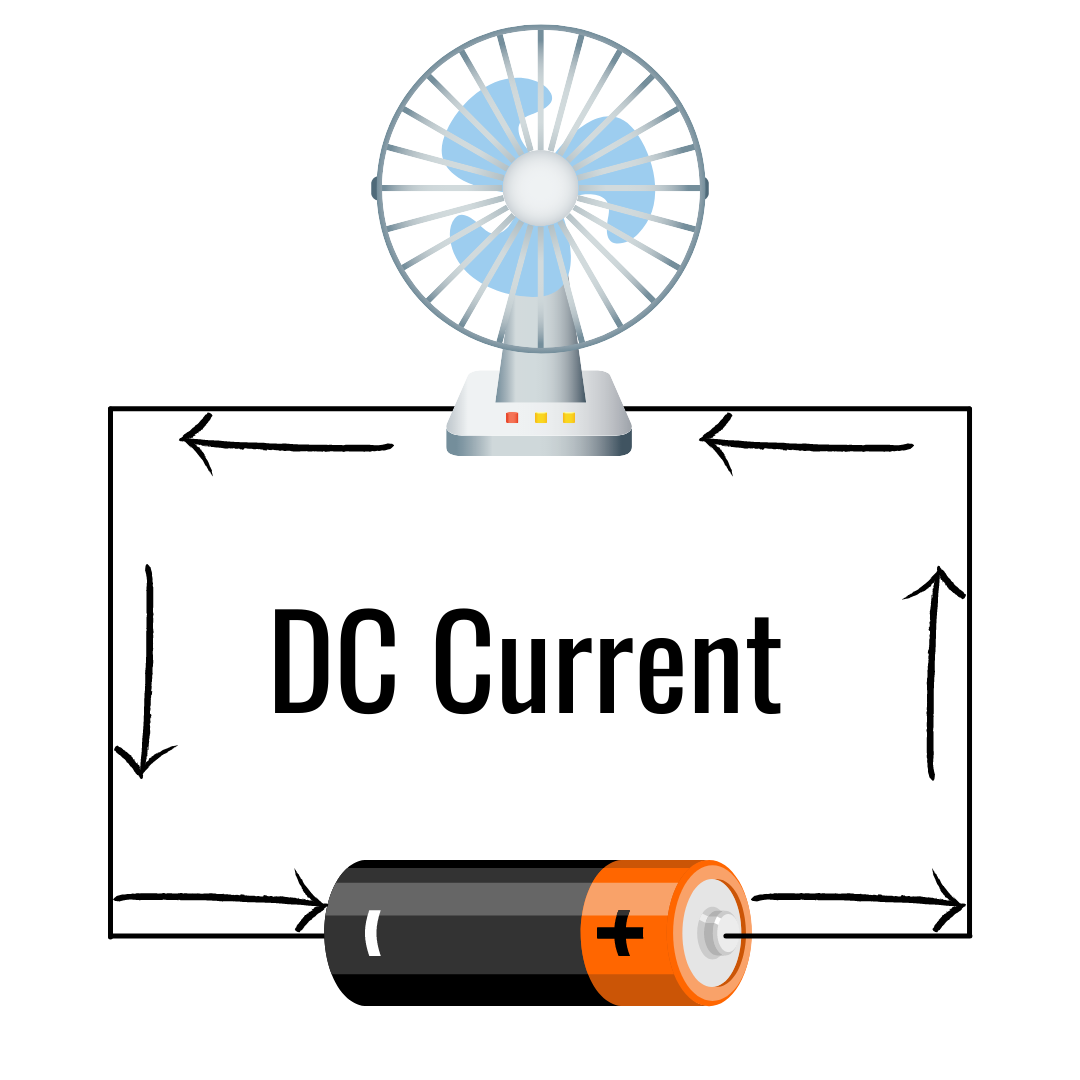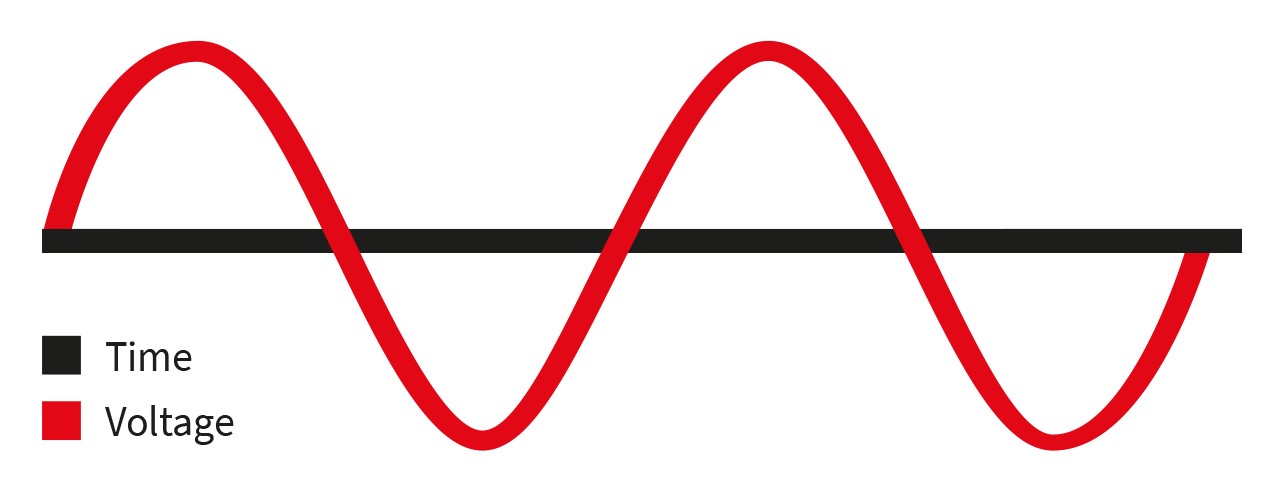Inverters Guide
Power inverters, or simply 'inverters', are transformers that will convert a DC current into an AC current, allowing you to run higher voltage equipment from a battery or other DC power source. Inverters have become increasingly popular over the past decade, allowing motorhome, campervan, caravan, boat and off-grid users to continue operating normal household equipment whilst away from mains power. An inverter works by not only increasing the voltage, but by matching the frequency of a mains AC voltage in either a pure sine waveform or a modified sine waveform. Inverters are complex units, so in this guide we will try and help you understand how they work and how to select the best inverter for your project.
What is the difference between AC and DC?
So why can't we just increase the voltage but stick with DC current? This comes down to how the electric current flows. DC (Direct Current) flows in a constant direction, meaning the electrons flow only one way. This flow is from the negative (as electrons are negatively charged) to the positive, which then results in the current being produced and flowing in the opposite direction. DC is used in batteries & hydrogen fuel cells.
AC (Alternating Current) is an electrical current that periodically changes direction. The change in direction of the current happens throughout a cycle and is caused by the electrons flowing in alternating positive and negative directions. When current magnitude is plotted against time you can see this cycle and it creates the AC sine waveform shape that you will probably be familiar with. The number of cycles per second is referred to as the frequency of the current and is normally 50-60Hz for domestic use.
AC is used in domestic and commercial buildings and is even produced by your vehicle or boat's alternator (however, this is converted to DC using a rectifier in order to charge your battery). So, since all equipment designed to be run at home works with AC and higher voltages, we need to be able to replicate this if we want to run this equipment when we don't have access to mains electricity.

.png)
What is the difference between a Modified/Quasi Sinewave Inverter and a Pure Sinewave Inverter?
An inverter will create an output frequency (i.e. the number of alternating cycles per second) in line with a standard household electricity supply, which is around 50 to 60 Hz (Hertz = cycles/second), however, this can be achieved in two ways.
- A pure sinewave is the smoothest waveform an inverter can produce and is more desirable for sensitive equipment. The shape of the waveform allows for devices to experience the change in direction of the current in a more gentle fashion, so as not to cause any problems to internal components, and is the waveform produced by your domestic AC supply.

- Square waveforms are are used by modified sinewave inverters to produce a waveform that closely replicates that of a pure sine wave, but at a lower cost. Whilst this type of waveform is suitable with most equipment, more sensitive pieces of equipment may not be able to handle the abrupt change in current direction.

So how do they work?
A modified sine-wave inverter works by creating 2 waveforms, with 1 being phase-shifted 90 degrees relative to the other. This creates a 3 level waveform (as shown below) which roughly resembles a sinewave.

A pure sine wave inverter uses Pulse Width Modulation (PWM) to help it create the smoothest type of waveform available. This works by using microprocessors to create a series of pluses which, when produced in differing widths and amplitudes, can very closely resemble a pure sine waveform. By using higher quality components, as well as applying electronic 'filters' to smooth the waveform, these pulses can be made finer and can more closely match the shape of a pure sine wave, so more expensive inverters will generally have a better sine wave output shape.

How do I pick the best inverter for me?
So, when picking an inverter there are two things to consider:
1. Waveform required
If you're running sensitive equipment you may wish to go for a pure sine wave model, however, if you are only powering a laptop, charger or TV, you may want to opt for a modified sinewave model to reduce cost.
2. Power consumption of your AC equipment
You need to determine the power consumption in Watts (W) required to run your AC equipment. This can usually be found on a label on the equipment as shown below. If you don't have a wattage value, but instead have an amperage, all you will need to do is multiply this by the voltage, i.e. 1.1A x 230V = 253W.

Once you know the power consumption you can select an inverter that has an adequate output power, and we recommend selecting one that has an output power 50-100% greater than the power consumption of your AC equipment. This is to ensure that it is not working at the limits of its capacity, which can cause premature failure. For example, if your equipment consumes 1000W we would recommend an inverter capable of producing at least 1500W, ideally 2000W.
Note of caution: The equipment label often shows the output power, but there is always inefficiency in energy conversion so the input power will be greater. How much greater will depend on the efficiency of the equipment, but it can be very significant. For example, microwave ovens are always rated in terms of their output power (after all, you want to know how much power is going in to heat your food), but they are only about 60-70% efficient, so an 800W microwave could consume around 1100-1300W at its input. At first glance, you might think an 800W inverter would be adequate, but we can see that you would actually need something in the region of 1500W.
Inverter efficiency and battery capacity
As with our example on microwaves above, inverters themselves also have an inefficiency because they are converting energy. High quality inverters can be quite efficient but it still needs to be taken into account when thinking about how long your battery will supply power to the inverter.
For example, an inverter outputting 1000W at 230V will draw current from a 12V battery as follows:
1000W/12V = 83.33A (Power/Voltage = Current)
However, if we factor in an efficiency of say, 85%, the the calculation becomes:
1000W/12V/0.85 = 98A
So, the true current draw on our battery is going to be higher than a calculation based on the inverter output power would suggest.
We can now use this to determine if we have enough power available in or batteries to run the inverter, or if we need to upgrade our system. You can also see why it would be unwise to use an inverter to power USB chargers as these could be run directly from a 12V DC source and not suffer the energy loss in the conversion from DC, to AC and back to DC again.
We hope you have found this article helpful, however, if you have any further questions do not hesitate to get in touch with our sales team.
Disclaimer - The information contained in these articles is provided in good faith and we do our best to ensure that it is accurate and up to date, however, we cannot be held responsible for any damage or loss arising from the use or mis-use of this information or from any errors or omissions. The installer is ultimately responsible for the safety of the system so if you are in any doubt, please consult a qualified electrician.
